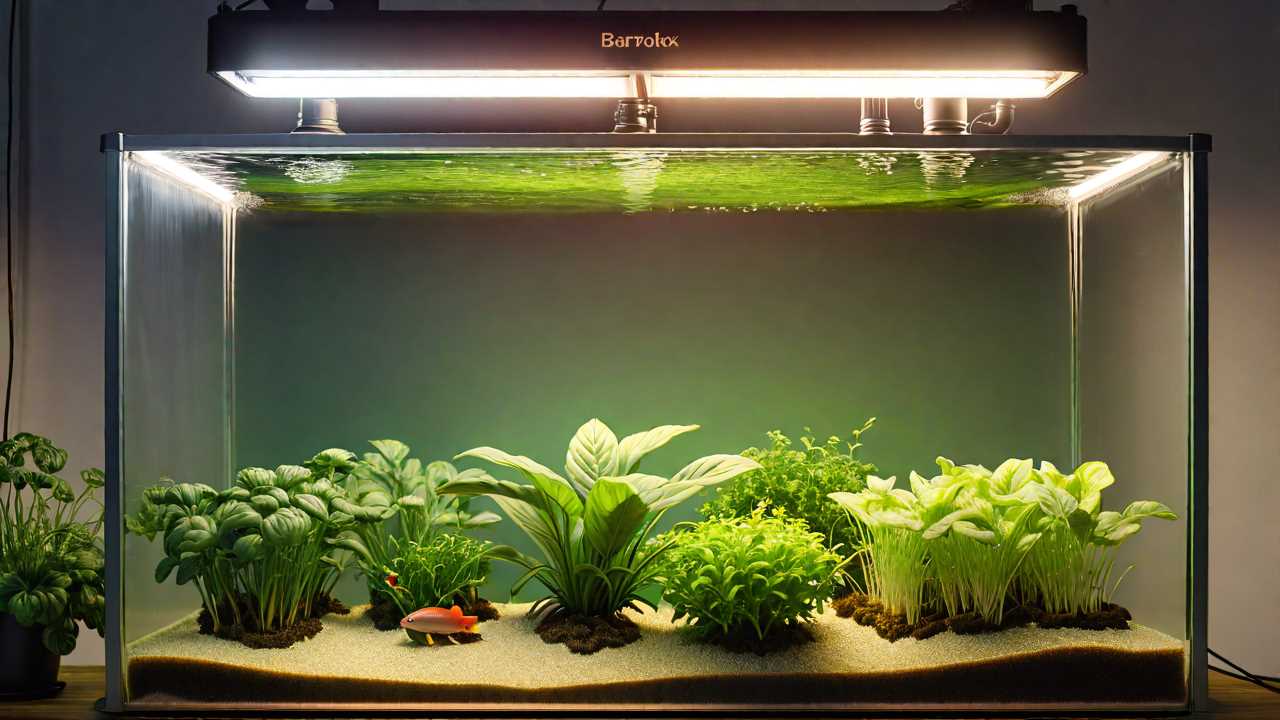
Imagine setting up a small-scale aquaponics system is like constructing a delicate ecosystem within your own home—a harmonious balance between aquatic life and flourishing plants. As you start this journey, you'll come to appreciate the intricate interplay between fish, plants, and water quality. But how do you begin this process, and what steps are essential for a successful setup? Let's delve into the initial steps and considerations involved in creating your own sustainable aquaponics system.
Choosing Fish and Plants
When selecting fish and plants for your small-scale aquaponics system, focus on species that are important for the environment and conditions you can provide.
For fish, consider species like tilapia, trout, or catfish, as they're commonly used in aquaponics systems due to their hardiness and adaptability to varying water conditions. Make sure the fish species you choose can thrive in the temperature range of your system and are compatible with the size of your setup.
Plants play a significant role in aquaponics by filtering the water and providing nutrients for the fish. Herbs like basil, mint, and parsley, along with leafy greens such as lettuce and kale, are excellent choices for small-scale systems. These plants grow well in aquaponics setups and can benefit from the nutrient-rich water provided by the fish.
Setting Up the System
Select a suitable location that receives sufficient sunlight and has access to water and electricity for setting up your aquaponics system. Confirm the area can support the weight of the system, as water-filled tanks can be heavy.
Start by placing the fish tank in a spot that can bear the weight and is close to a power source for the water pump. The grow bed should be positioned above the fish tank to allow gravity to facilitate the flow of water. Connect the water pump to the fish tank and the grow bed using tubing, maintaining a steady flow between the two components.
Next, set up the grow lights if your location lacks ample natural light. Position the lights overhead, ensuring they cover all the plants adequately. Fill the grow bed with a suitable growing medium and plant your chosen crops.
Monitoring Water Quality
To maintain ideal conditions in your aquaponics system, regularly monitor the water quality. Proper monitoring guarantees the health of your plants and fish by allowing you to make timely adjustments.
Here are some key aspects to focus on:
- pH Levels: Check the pH of the water weekly using a reliable test kit. The best pH for most aquaponic systems is between 6.8 and 7.0. Fluctuations outside this range can stress your fish and plants.
- Ammonia and Nitrite Levels: Ammonia and nitrites are harmful to fish. Test these levels at least twice a week, especially during the system's cycling phase. Ammonia levels should ideally be close to zero, while nitrites should be kept below 0.5 ppm.
- Oxygen Levels: Oxygen is vital for both fish and plant health. Monitor oxygen levels using a dissolved oxygen meter. Keep levels above 5 ppm to guarantee adequate oxygenation for your aquatic organisms.
Regularly monitoring these parameters will help you maintain a healthy environment for your aquaponics system.
Maintaining System Balance
Maintain system balance in your aquaponics setup by carefully managing the interplay between the fish, plants, and bacteria within the ecosystem. To guarantee a harmonious environment, monitor the ammonia levels produced by fish waste. Ammonia is converted by beneficial bacteria into nitrites and then nitrates, which are essential nutrients for plant growth.
Keep a close eye on pH levels as well, as they can impact nutrient availability to the plants. Aim for a pH between 6.8 and 7.0 for best nutrient uptake.
Regularly check the oxygen levels in the water, as both fish and plants require oxygen to thrive. Aerate the water if necessary to maintain sufficient oxygen levels.
Additionally, adjust the feeding rates based on the size and number of fish in your system. Overfeeding can lead to an excess of nutrients and imbalance the ecosystem.
Frequently Asked Questions
How Do I Prevent Pest Infestations in My Aquaponics System?
To prevent pest infestations in your aquaponics setup, maintain cleanliness by removing dead plant matter regularly. Introduce beneficial insects like ladybugs and lacewings. Use physical barriers like row covers and sticky traps. Monitor plants closely for signs of pests.
Can I Use Tap Water for My Aquaponics System?
Yes, you can use tap water for your aquaponics system. However, it's important to test the water quality first. Consider factors like pH levels and chlorine content. If needed, you can dechlorinate the water before introducing it to your system.
What Are the Best Practices for Preventing Algae Growth?
To prevent algae growth, maintain adequate shading to limit light exposure, monitor fish feed amounts to keep proper nutrient balance, and regularly clean grow beds. Implementing these practices will help maintain ideal conditions in your aquaponics system.
You should replace the grow media in your system every 2-3 years to maintain ideal conditions for plant growth. Over time, the media may become compacted or lose its effectiveness in supporting plant roots and beneficial bacteria.
What Is the Best Way to Acclimate Fish to the System?
To best acclimate fish, float the bag in the water for 15-20 minutes to equalize temperature. Then gradually add small amounts of tank water to the bag over 30 minutes before releasing the fish.
 SportsHollywoodLifestyleFashionHome & GardenTrendsPrivacy PolicyTerms And Conditions
SportsHollywoodLifestyleFashionHome & GardenTrendsPrivacy PolicyTerms And Conditions
